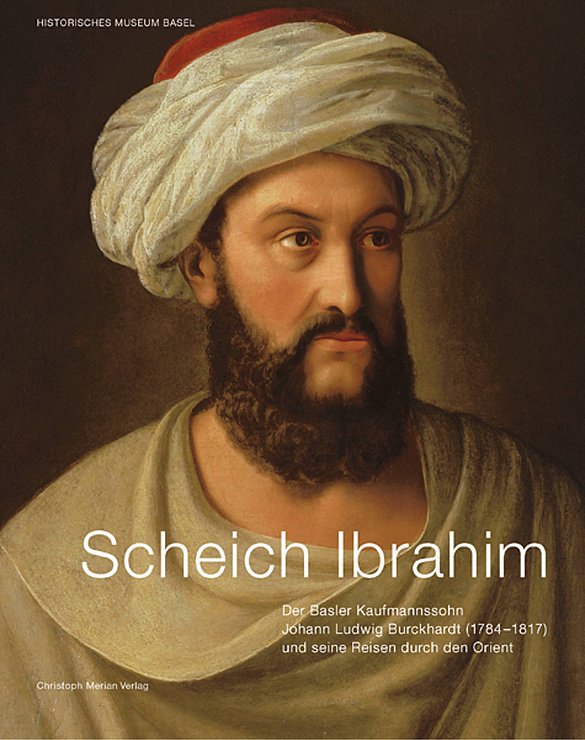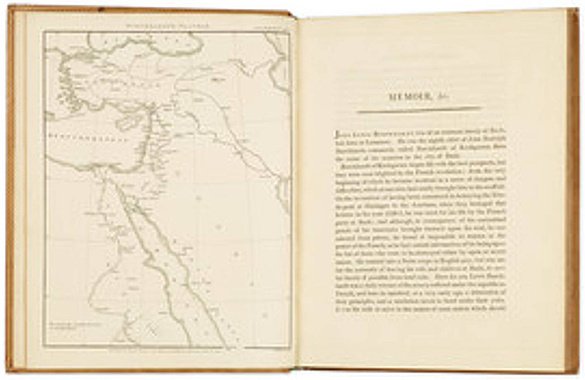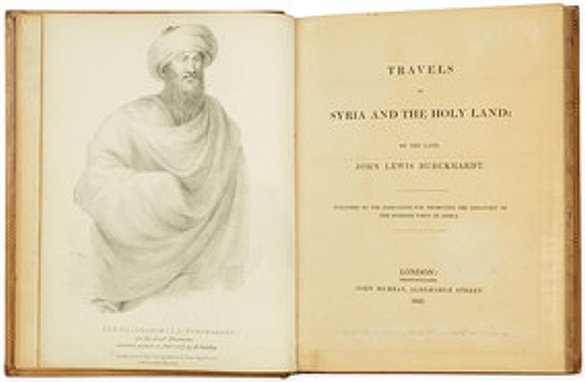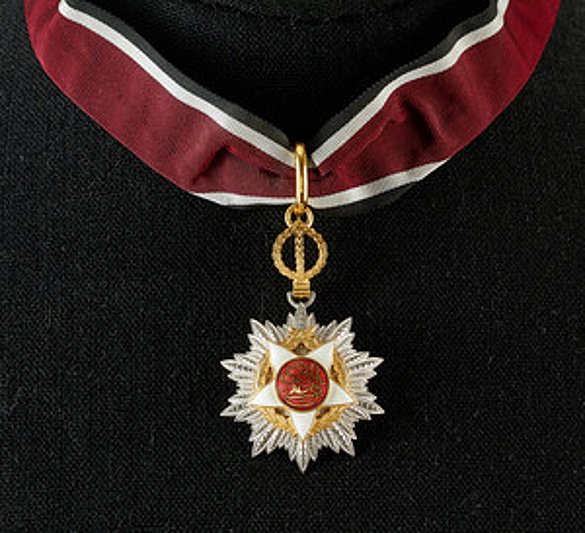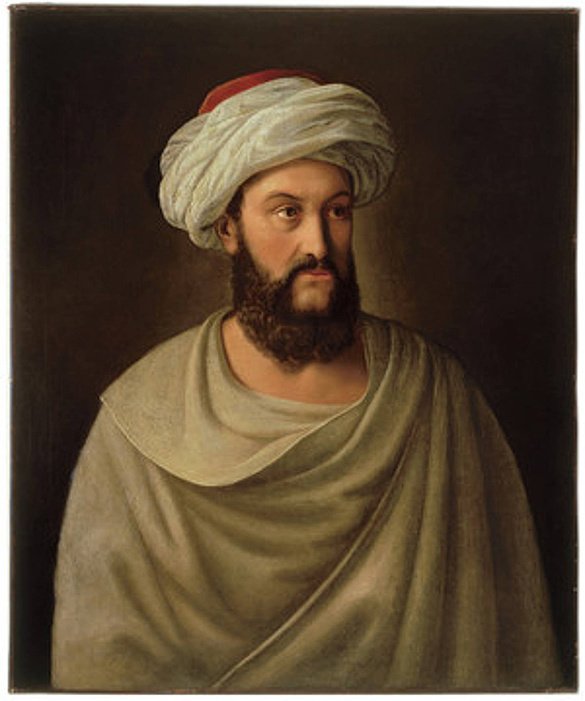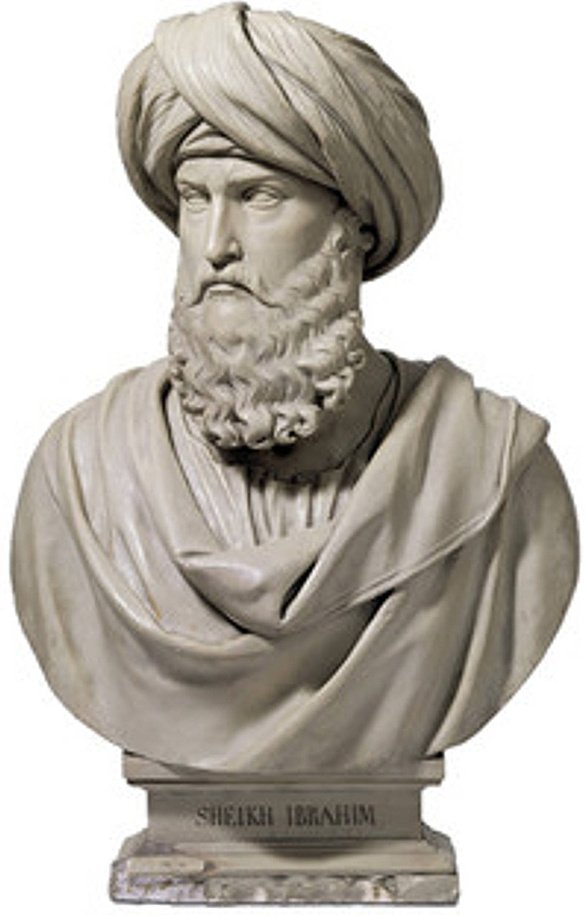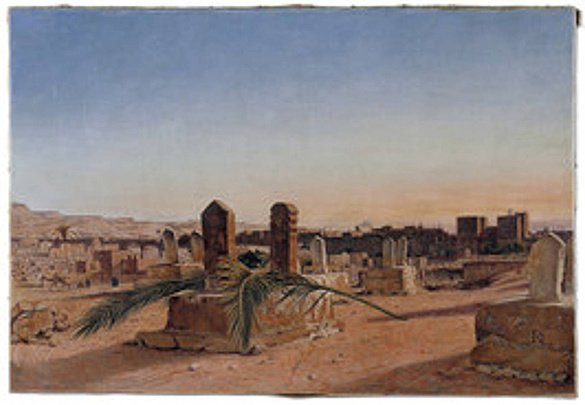Johann Ludwig Burckhardt was the son of a prosperous silk-ribbon manufacturer and grew up in the Haus zum Kirschgarten in Basel. After several years as a student in Germany, he went to London in search of employment. There he was recruited by the African Association, which in 1809 tasked him with exploring trade routes between Cairo and Timbuktu. After a period of intense preparation consisting primarily of the study of Arabic, he set off for Aleppo to begin his mission. To avoid being suspected of espionage, Burckhardt henceforth donned oriental garb and called himself Sheikh Ibrahim ibn Abdallah. Until his untimely death at the age of thirty-two, therefore, he was able to travel incognito through the then largely unknown territories of the Near East. Burckhardt’s accounts of his travels and descriptions of the Bedouins became important sources for nineteenth-century cartographers and ethnographers. They are still avidly read even today, and every few years new editions of them are published.
This extensively revised and expanded edition of the biography authored by a team of experts from the Historisches Museums Basel sheds new light on the life of this fascinating traveller and explorer. As the only German-language publication on Johann Ludwig Burckhardt, it has also provided an opportunity to turn the spotlight on his family background, his childhood and youth in the Haus zum Kirschgarten, his education and training, and formative influences. Quoting liberally from his letters and reports, this new edition of Scheich Ibrahim gives the sheikh himself a voice.


